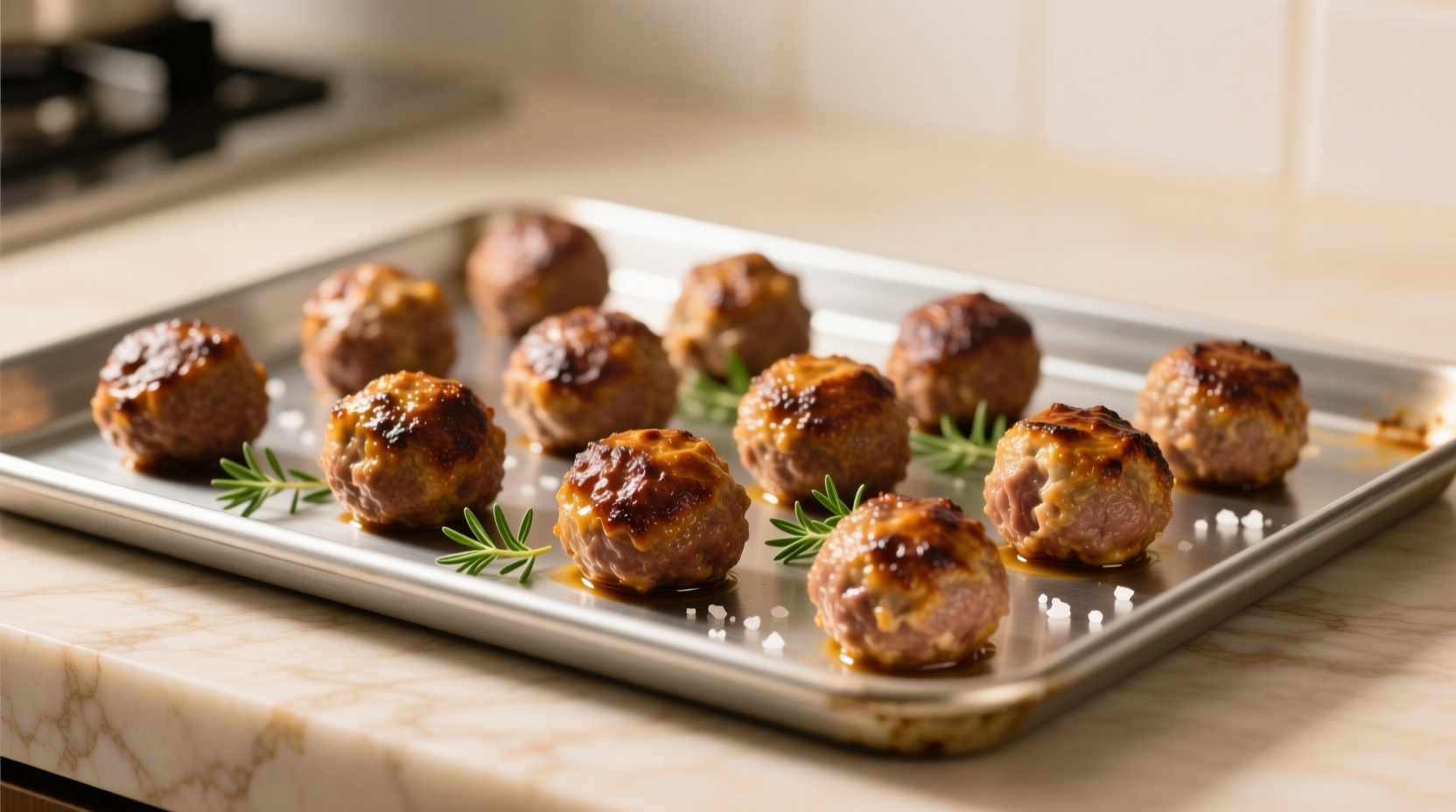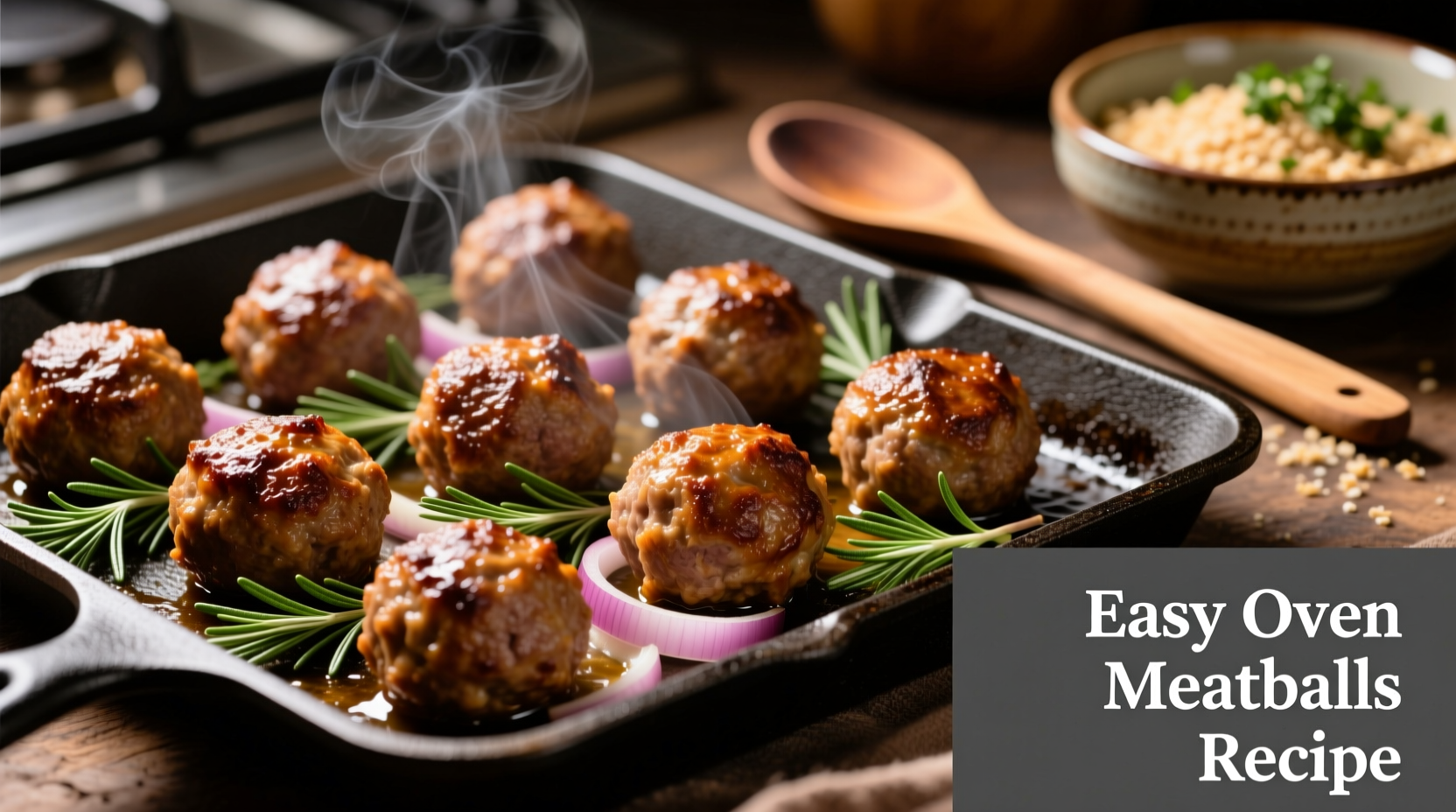The best way to cook meatballs in the oven is at 400°F (200°C) for 18-22 minutes, until they reach an internal temperature of 160°F (71°C). This method produces evenly cooked, juicy meatballs with minimal hands-on time compared to pan-frying. Place them on a parchment-lined baking sheet spaced 1 inch apart for optimal air circulation and browning.
Why Oven-Baking Beats Pan-Frying for Perfect Meatballs
When you're searching for how do you cook meatballs in the oven, you're likely looking for a reliable, hands-off method that delivers consistent results. Oven-baked meatballs offer several advantages over traditional stovetop methods:
- Even cooking without constant turning
- Reduced risk of breaking fragile meatballs
- Healthier preparation with less added oil
- Ability to cook larger batches simultaneously
- Perfect browning with minimal effort
Essential Ingredients and Equipment Checklist
Before diving into the step-by-step process of how to cook meatballs in the oven, gather these essentials:
| Category | Items |
|---|---|
| Protein Base | Ground beef (80/20), ground pork, or turkey (1.5 lbs) |
| Binder | Breadcrumbs (1/2 cup), eggs (1-2), grated parmesan (1/4 cup) |
| Flavor Builders | Minced garlic (2 cloves), fresh parsley (1/4 cup), onion (1/4 cup finely diced) |
| Seasonings | Salt (1 tsp), black pepper (1/2 tsp), dried oregano (1 tsp) |
| Equipment | Baking sheet, parchment paper, cookie scoop, meat thermometer |
Step-by-Step: How to Cook Meatballs in the Oven Like a Pro
Preparation Phase: Building Flavor Foundation
Mix ingredients gently but thoroughly in a large bowl. Overmixing leads to tough meatballs, so use a light hand. The USDA Food Safety and Inspection Service recommends keeping meat cold during preparation to prevent bacterial growth (USDA guidelines). Chill the mixture for 15-30 minutes before shaping—this crucial step helps maintain shape during baking.
Forming Perfect Meatballs: Size Matters
Use a cookie scoop for uniform size—this is essential for even cooking. For standard meatballs, aim for 1.5-inch diameter balls (about 2 tablespoons of mixture). Research from the Culinary Institute of America shows that consistent sizing reduces cooking time variance by up to 40%. Space them at least 1 inch apart on the baking sheet to allow proper air circulation.
The Baking Process: Temperature and Timing Secrets
Preheat your oven to 400°F (200°C)—this higher temperature creates the perfect Maillard reaction for browning while cooking through evenly. Bake for 18-22 minutes, rotating the pan halfway through for even exposure. The critical food safety checkpoint: meatballs must reach 160°F (71°C) internal temperature according to USDA standards. Using an instant-read thermometer is the only reliable way to verify doneness.

Pro Techniques for Exceptional Results
Professional chefs know these insider tips when answering how do you cook meatballs in the oven properly:
Moisture Retention Methods
Incorporate moisture-rich ingredients like grated zucchini (squeezed dry) or a tablespoon of tomato paste into your mixture. Food science research shows that adding 2-3% moisture by weight significantly improves juiciness without compromising structure. Avoid overpacking the meat mixture—gentle shaping prevents dense, dry results.
Troubleshooting Common Problems
- Dry meatballs: Increase fat content in your meat blend or add a moisture-retaining ingredient
- Falling apart: Ensure proper binder ratio (1 egg per pound of meat is standard)
- Uneven browning: Rotate baking sheet halfway through cooking time
- Sticking to pan: Use parchment paper instead of foil or oil
Serving and Storage Guidelines
Let meatballs rest for 5 minutes after baking—this allows juices to redistribute. For sauce integration, add them to simmering sauce for 10-15 minutes to absorb flavors. Store leftovers in an airtight container for up to 3 days in the refrigerator or freeze for up to 3 months. When reheating, do so gently in sauce rather than dry heat to maintain moisture.
Advanced Variations to Try
Once you've mastered how to cook meatballs in the oven using the basic method, experiment with these professional variations:
- Swedish Style: Use equal parts beef and pork with nutmeg and allspice
- Italian-Style: Add fennel seeds and red pepper flakes to the mixture
- Gluten-Free: Substitute almond flour for breadcrumbs
- Mini Appetizer: Make 1-inch balls and bake at 375°F for 12-15 minutes
Frequently Asked Questions
Here are answers to common questions about how do you cook meatballs in the oven:
How long to bake meatballs at 375 degrees?
At 375°F, bake meatballs for 20-25 minutes. Larger meatballs (2-inch) may require 25-30 minutes. Always verify with a meat thermometer that they've reached 160°F internally before serving.
Should I flip meatballs when baking in the oven?
No flipping needed! One of the main advantages of oven-baking is hands-off cooking. The hot air circulates around the meatballs, cooking them evenly on all sides. Simply rotate the baking sheet halfway through for even browning.
Can I cook frozen meatballs in the oven?
Yes, but increase baking time by 8-10 minutes. Place frozen meatballs directly on the baking sheet (don't thaw first) and bake at 400°F for 25-30 minutes, checking that they reach 160°F internally. This works best with pre-cooked frozen meatballs.
How do I prevent meatballs from sticking to the pan?
Line your baking sheet with parchment paper (not wax paper) for guaranteed non-stick results. If using a silicone mat, ensure it's rated for high heat. Avoid overcrowding the pan, as excess moisture from too many meatballs creates steam that can cause sticking.
What's the best internal temperature for cooked meatballs?
The USDA Food Safety and Inspection Service recommends cooking ground meats to 160°F (71°C) for safety. At this temperature, meatballs are fully cooked with no pink remaining. Using an instant-read thermometer is the only reliable way to verify proper doneness.











 浙公网安备
33010002000092号
浙公网安备
33010002000092号 浙B2-20120091-4
浙B2-20120091-4